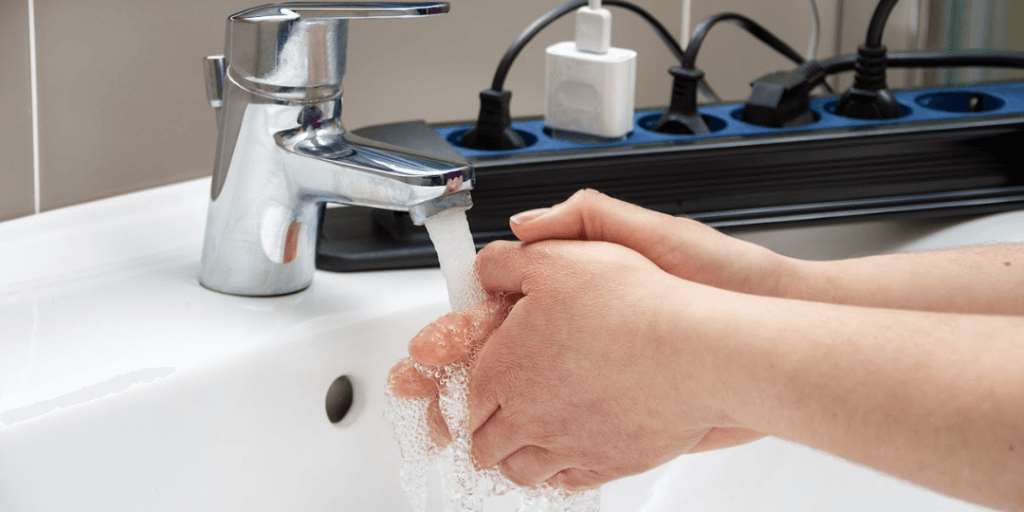
29 Apr Kitchen Electrical Safety: Essential Tips to Prevent Shocks
The kitchen is a hub of activity, and with all its appliances, water sources, and potential for spills, it can also be a prime location for electrical hazards. Electrical shocks range from mild tingles to severe injuries and even fatalities. Understanding how to prevent them empowers you to keep your kitchen a safe and enjoyable space.
Why Kitchens are Prone to Electrical Risks
- Water: Kitchens are filled with water sources – sinks, dishwashers, even the potential for spills. Water is a superb conductor of electricity, making electrical safety in the kitchen especially critical.
- Appliances: The modern kitchen relies heavily on electrical appliances, from large refrigerators to small toasters. These appliances, when faulty or not carefully handled, can create electrical hazards.
- Outlets: Kitchens often have a significant number of electrical outlets to accommodate many appliances. These outlets can be overloaded or misused, increasing electrical risks.

Essential Prevention Strategies
Let’s delve into specific actions you can take to minimize the chances of a nasty shock in your kitchen:
- Ground Fault Circuit Interrupter (GFCI) Outlets: Upgrade! GFCI outlets are your kitchen’s frontline defense. They monitor electricity flow, instantly cutting off power if they sense a dangerous ground fault (electricity leaking outside its intended path). Install GFCI outlets anywhere near water sources – sinks, dishwashers, even countertops where you might use small appliances. Building codes may already require this, so consider it essential, not optional.
- Dry Hands, Dry Environment Electricity and water don’t play well together. Always make sure your hands are dry before handling appliances, plugging or unplugging them, and even turning on light switches if your hands might be damp. Keep your workspace as dry as possible.
- Careful Unplugging Never yank an appliance out by the cord! This strains the wires inside, increasing the risk of damage and a potential shock hazard. Always grasp the plug firmly and pull straight out from the socket.
- Inspect Your Appliances Check appliance cords regularly for frays, cuts, or other damage. Any appliance with a damaged cord is a shock hazard; don’t use it until repaired by a qualified technician. If an appliance gives you even a slight tingle, stop using it and have it checked out.
- Outlet Overloading – Don’t Do It Outlets have capacity limits. Overloading them is a recipe for overheating and potential electrical malfunctions or fires. If you need more outlets, have a licensed electrician install them. If you must use power strips, use those with overload protection, and ensure they are properly rated for the appliances you connect.
- Extension Cords are Temporary Extension cords should never be a permanent solution in your kitchen. They’re designed for short-term use. Continuously relying on extension cords overloads the system and creates tripping hazards.
- Kids and Kitchens: A Safety Chat Depending on their age, teach children about electrical safety. Stress that water and electricity don’t mix, and always supervise their interactions with appliances until you’re confident they understand the risks.
- When in Doubt, Shut it Off If an appliance starts sparking, smoking, or you smell burning, don’t try to handle it yourself. If safe to do so, turn off the power at the circuit breaker, then unplug the appliance and call a repair technician.
Additional Proactive Measures
- Appliance Maintenance: Regularly service large appliances according to the manufacturer’s recommendations, and promptly repair any malfunctions in smaller appliances.
- Professional Inspection: If your home and kitchen are older, have a licensed electrician assess the wiring, outlets, and the capacity of your electrical system to ensure it aligns with modern appliance usage.
What to Do in Case of Electric Shock
- DO NOT touch the person: If you see someone getting shocked, don’t touch them directly as you might get shocked too.
- Cut the power: Turn off the power at the main breaker if possible. If not, try to knock the person away from the electrical source with a non-conductive object like a wooden broom handle.
- Call emergency services: Seek immediate medical attention even if the shock seems mild.
By keeping these strategies in mind, you’ll create a safer kitchen for yourself and your family!



Sorry, the comment form is closed at this time.